Tenmoku appeared during the prosperous Tang Dynasty and reached its peak during the Song Dynasty, but then declined and eventually disappeared from history. After experiencing a tumultuous journey through time, it reappeared in our vision, with its numerous beautiful cups captivating and unforgettable, sparking a renewed interest in Tenmoku and causing a frenzy among collectors. The rarity of high-quality Tenmoku, due to the difficulty of its firing process, is another reason why its prices continue to rise. The scarcity of perfect Tenmoku has resulted in intense competition among enthusiasts for ownership.

First of all, the firing process of Tenmoku presents unique challenges that are specific to it. While other types of ceramics can be mass-produced by reducing costs through formula adjustments, the same is not true for Tenmoku. Its formula is not fixed and cannot be produced in large quantities. During firing, the master must consider environmental changes, weather conditions, and flexible adjustments due to differences in clay composition. If the process remains unchanged, the quality of Tenmoku will be greatly compromised.

Secondly, the firing process of Tenmoku has unique requirements for glaze: it must be thick. If the glaze is too thin, it will affect the formation of the oil droplets and fail to meet the high-quality standard. A thick glaze is not difficult for experienced masters, but the challenge lies in determining the appropriate thickness.
If the glaze is too thick, it will slide down during high temperature firing, resulting in a thicker glaze towards the bottom of the Tenmoku. This will prevent the original crystal pattern from showing under the thick glaze, and the distribution of the patterns and colors will also be different, making it difficult to achieve the desired result.
Another problem that arises from a glaze that is too thick is that if the firing temperature is too high or the firing time is too long, the glaze can flow onto the base and cause it to stick. Once the base is stuck, even if it is separated using tools, it can still affect the overall beauty of the Tenmoku.
Another difficulty in firing Tenmoku lies in controlling the temperature. Temperature plays a crucial role in the formation of ceramics. However, the temperature control required for firing Tenmoku is even stricter than that for other types of ceramics.
While some types of ceramics require firing at temperatures of 1,200 degrees Celsius, Tenmoku requires a temperature of over 1,300 degrees Celsius. However, it is not just a matter of firing at that temperature, but also of controlling the temperature range throughout the firing process. A temperature that is too high or too low can cause the firing to fail, resulting in substandard products.
Moreover, temperature plays a crucial role in the interaction of trace elements within the glaze, resulting in unimaginable and marvelous changes. This also increases the difficulty in firing a perfect Tenmoku cup.
In addition, to create Tenmoku cups with crystal-like patterns such as hare's fur or oil spots, a reduction atmosphere must be created during firing. This refers to the reducing gas produced when combustion is incomplete. If the reduction atmosphere is not properly controlled due to inadequate sealing or excessive oxygen entering, the reduction atmosphere will be destroyed, and it will not be possible to fire beautiful crystal patterns.
This change, which puzzled ancient ancestors and still lacks a clear answer in modern research, is one of the reasons why Tenmoku is so rare and highly sought after. Its rarity and difficulty in production make it a precious treasure.


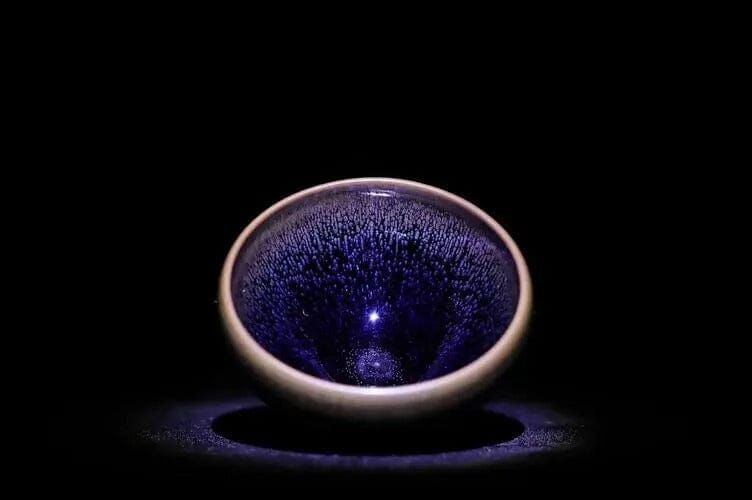
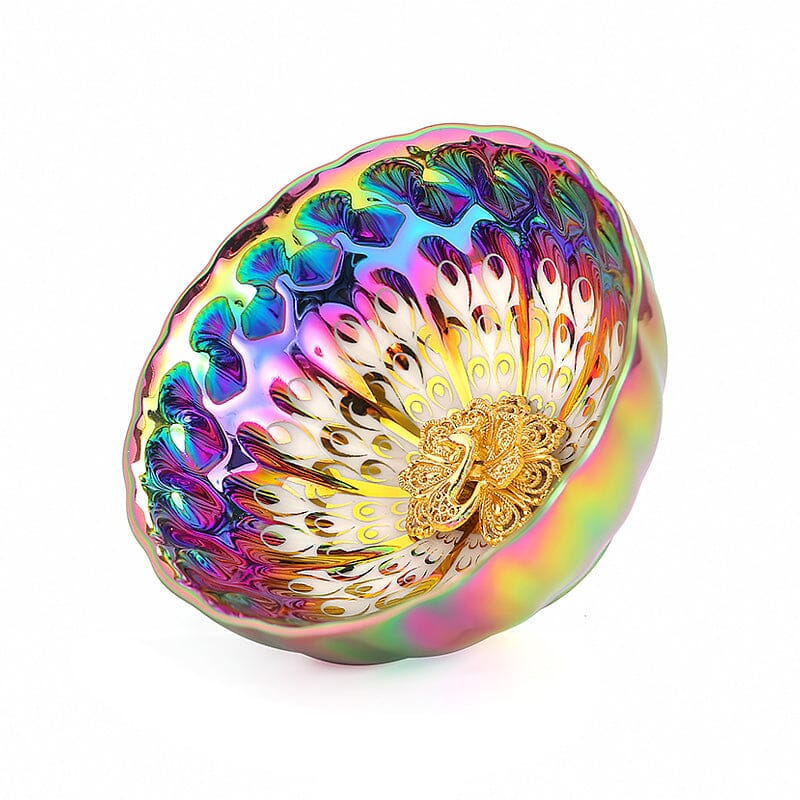
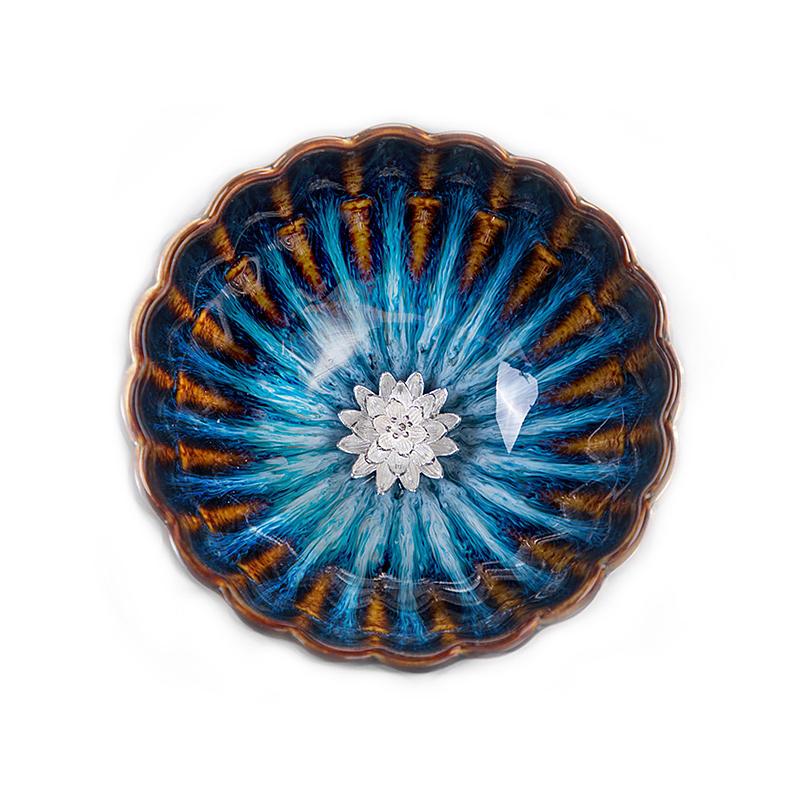
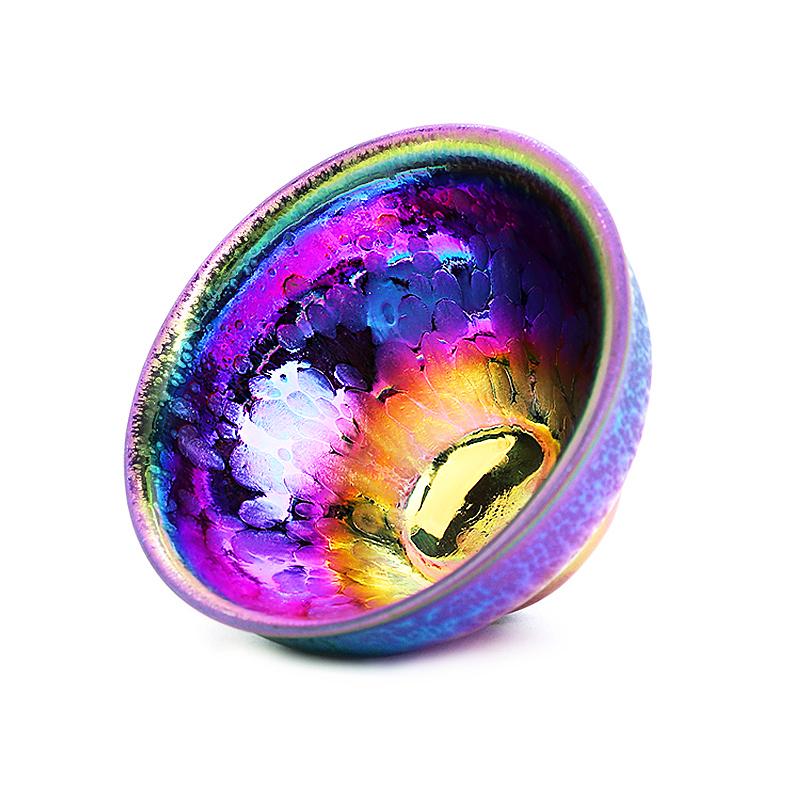
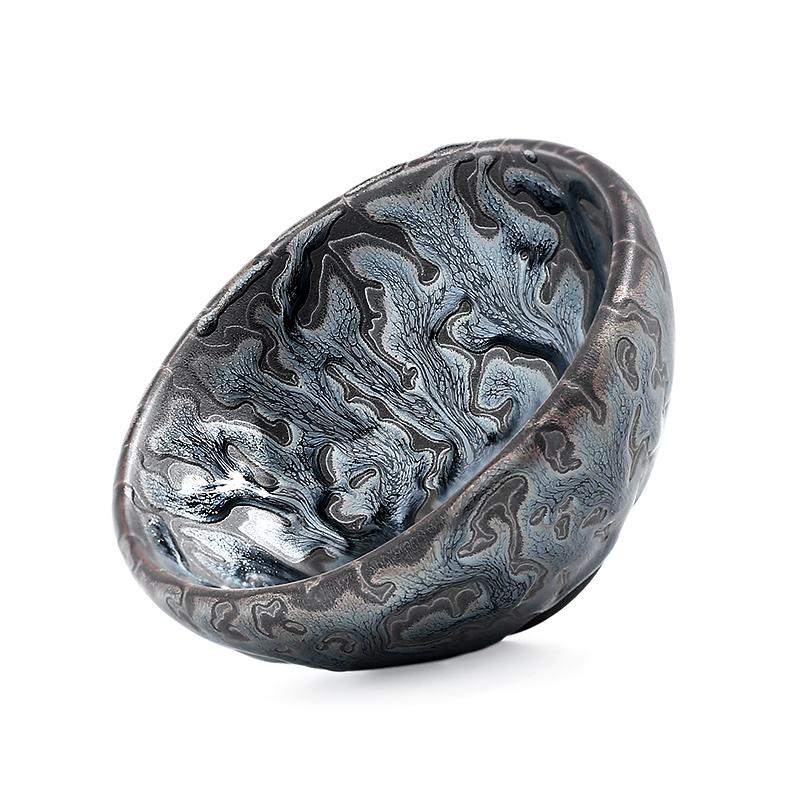
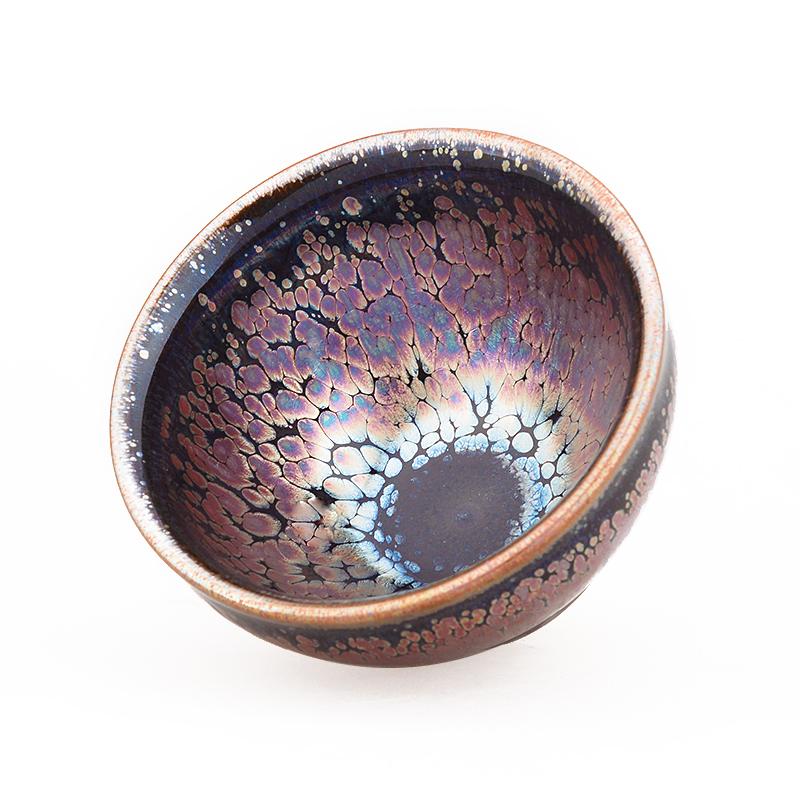
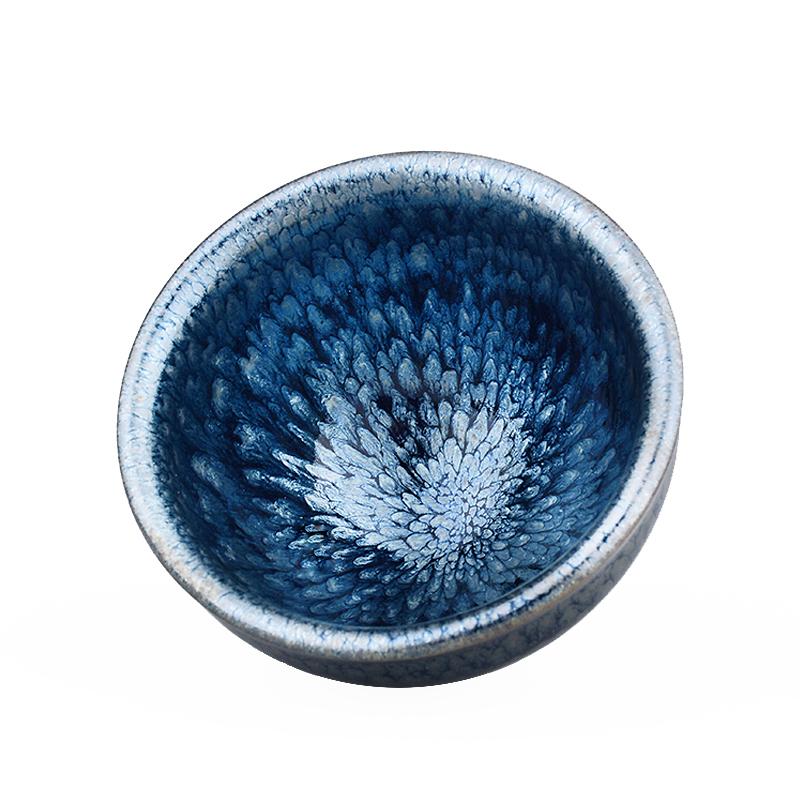
Share:
How much is a Yao Bian Tenmoku worth?
With so many tea cups available, why do people prefer to use Tenmoku?